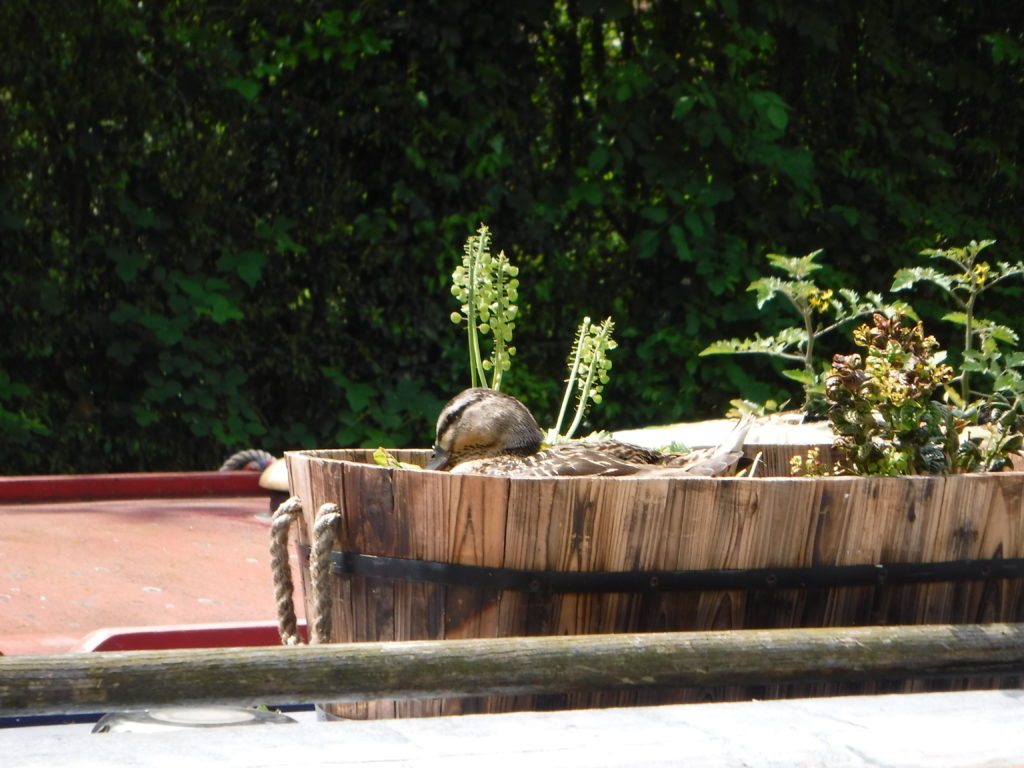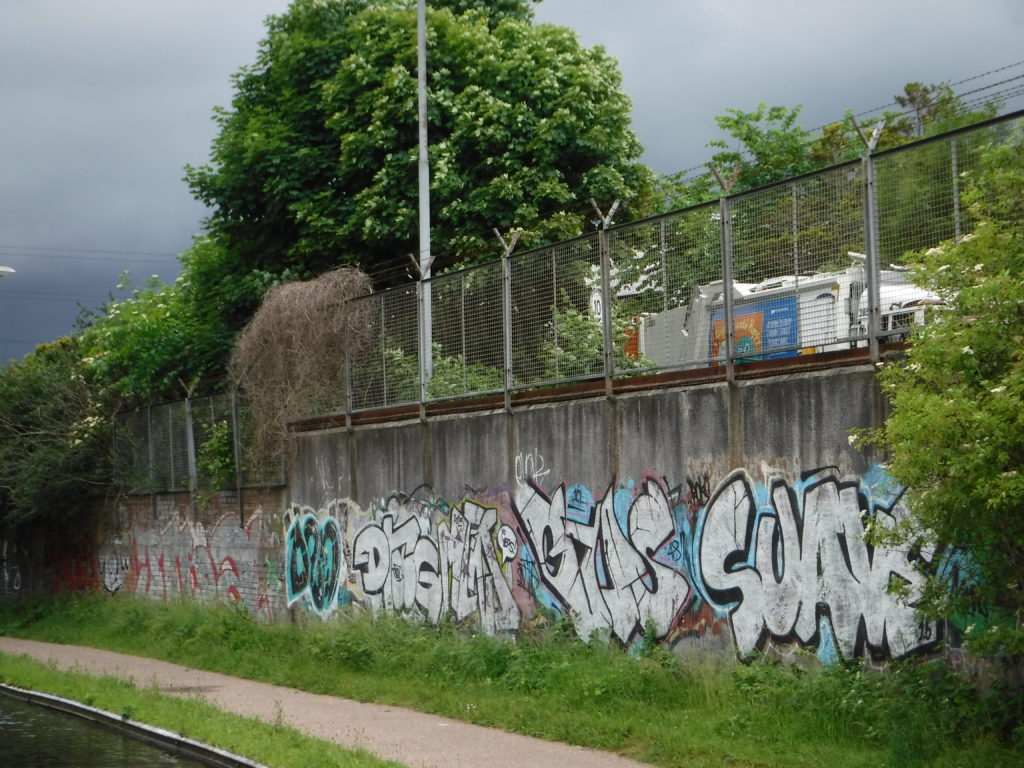Approaching Brum
I mentioned lift bridges yesterday, but did not get around to taking a picture of one as we were too busy getting the boat through. Here’s one we went through today.

This was on a busy road, so it had been electrified to go up and down faster. All Paula had to do was unlock it with the magic Canal and River Trust key and press a button.
While most locks have gates that swing open and closed when you push on a huge handle called the balance beam, but some of them go up and down. Here’s guillotine lock gate.

Thankfully that lock is no longer used so we did not have to crank that one up and down.
In England, cider is always an alcoholic drink, as it was in America up until prohibition. In fact, all those apple trees that Johnny Appleseed planted were for hard cider and applejack rather than eating apples. Good cider had always been popular in the West Country (ie South West England, the bit that sticks out underneath Wales) but it seems to be spreading these days. We went past a pub specializing in cider.

The traditional West Country cider is known as scrumpy, and is cloudy, bitter, strong, and served in pint mugs. There’s an old story that rats are added to the brew to improve the flavor. Years ago I was told by someone who worked in a scrumpy factory that this was false. It’s just that the rats that fell into the fermentation vats could not get out, so when they drained the vats they would find rat bones at the bottom. These days I’m sure things are much more hygienic, and the scrumpy rats are thoroughly pasteurized.
Here’s a boat with a nice container garden, and a rubber ducky on the front.

Rubber ducks have significant advantages over live ducks for the canal boat gardener, because they don’t nest in the planters.

But that’s ducks for you. No consideration.
As we approach the Birmingham suburbs, more of the canal side is built up with hideous modern apartments or repetitive postwar semis.

(Linguistic note: In the UK a semi is a semi-detached house which would be called a duplex in America. In America a semi is a semi-trailer truck, which in the UK would be called an articulated lorry, artic, or bloody juggernaut.) Though the houses have little individual expression, many of the gardens are a riot of color, though. I think the English are more likely to express themselves by planting a shrubbery than by painting their half of the drainpipe a different color.
When we finally turn from the Stratford canal towards Birmingham on the Worcester and Birmingham Canal, we enter an industrial district, and the towpath is bounded by graffiti covered brick walls and chain link fences.

Birmingham, England and Birmingham, Alabama are geologically similar. They both have coal, iron ore, and limestone in close proximity, so they were natural centers of the steel industry. By English standards Birmingham became a major city relatively recently, during the industrial revolution, as the villages of the West Midlands grew together to form a single large conurbation.
Colloquially Birmingham is called Brum or Brummagem. In the late 1600s, Birmingham was known for counterfeit groats, so Brummagem came to mean anything fake or counterfeit. (A groat was a coin worth four old pence, so three groats would be a shilling, and sixty groats would be a pound. They contained five to six grams of silver, about three dollars worth today, but the purchasing power would have been greater back then as silver was rarer.) Later, with the growth of Birmingham as a manufacturing center, Brummagem came to mean anything cheaply mass produced and of questionable quality.
I used to call Birmingham the city where nobody paid full price for anything because they always knew someone who worked in the factory where it was made and could get an employee discount. The West Midlands was still a booming part of the country back then. However, manufacturing is a much smaller percentage of the UK economy than it was when I was a kid, so it will be interesting to see how Birmingham has held up.
At least one famous Brummie brand is still going strong, though the company has been bought out.

We went though the town of Bournville, built by the Cadbury family starting in the late 1800s, as a model town for their workers. The canal side location of Cadbury’s is not a coincidence. They used to receive deliveries of milk and sugar by canal, while the cocoa beans came by train. Cadbury’s were pioneers in treating their workers well, with decent wages, pensions, and health benefits.
We stopped for the night in Selly Oak, as it has a launderette and Sainsbury’s close to the canal. The main street is a bit grungy but bustling. There are students from the nearby University of Birmingham, and a great mix of ethnicities. As the saying goes, you can always tell a Brummie by the shamrock in his turban. It’s a relief to see some non-white faces again, because you don’t see many of them cruising the Stratford canal, more’s the pity.
3 thoughts on “Approaching Brum”
Apparently you are heading for the wettest June ever recorded in th UK.!! So well done for not moaning about it . P.S. In 23 weeks here we have only had 2 half days with a couple of showers and Jan’ was the hottest ever recorded wth temp’s averaging 81*f .Lock your doors at night for the next few nights! Tony X
Vittles? I thought that was a term from the southern Appalachians, but I guess many of those folk are descended from UK immigrants.
Vittles, or victuals, is a very old word. Chaucer used it.
It’s not much used in modern England, but everyone would understand it.